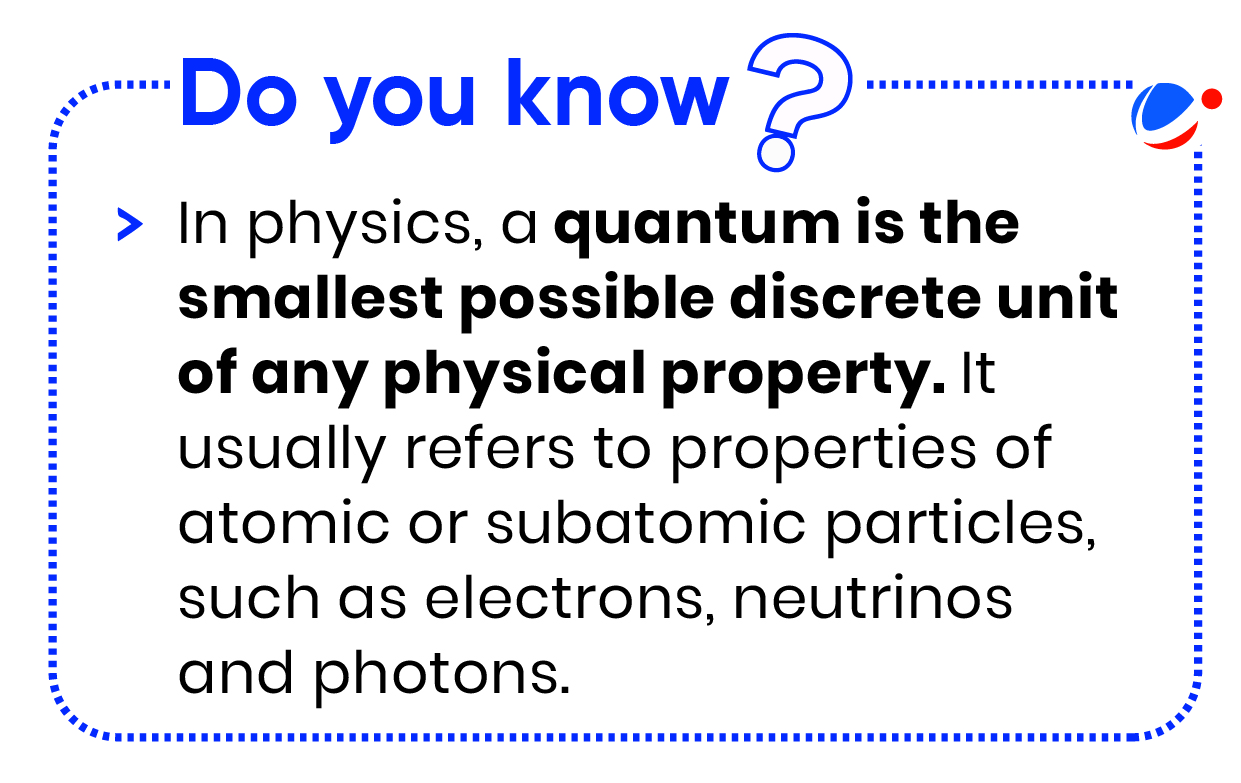Why in the News?
UN designated 2025 to be International Year of Quantum Science and Technology.
More about the News
- Year 2025 was chosen as it recognizes 100 years since the initial development of quantum mechanics.
- German physicist Werner Heisenberg published a famous paper which led to the discovery of phenomena called quantum mechanics.
- It is a global initiative that aims to strengthen national capacities in the basic sciences and science education.
- Also, it highlights the contribution of quantum science to our increased knowledge and understanding of the physical universe, as well as the critical role of quantum science and technology in developing sustainable solutions.
About Quantum mechanics and its key applications

Quantum mechanics explains how extremely small objects simultaneously have the characteristics of both particles (tiny pieces of matter) and waves (a disturbance or variation that transfers energy).
- Quantum Computing & Simulations: Uses qubits (typically subatomic particles) as I basic unit of information instead of binary bits.
- In Health care & well-being, Quantum photonics is advancing medical imaging and diagnosis and Quantum chemistry is supporting development of new vaccines and drugs.
- Quantum computing along with Artificial Intelligence (AI) can process vast amounts of data and perform complex calculations rapidly.
- Optimisation in Logistics and Supply Chain by effectively solving complex optimisation problems, such as route planning and inventory management.
- Quantum Communications: It includes Post-quantum cryptography (or quantum-proof cryptography) and Quantum key distribution (QKD).
- QKD uses a series of photons to transmit a secret, random sequence known as the key.
- Quantum Sensing & Metrology: Uses individual particles such as photons and electrons as highly sensitive sensors in current technologies related to measurements of forces, gravitation, electric fields etc.
- Quantum Material & Devices: Design and synthesis of quantum materials such as superconductors, novel semiconductor structures, and topological materials for the fabrication of quantum devices.
- Quantum engineering is leading to more energy-efficient and affordable solar cells and low-emission LED light sources and improving accuracy of long-term climate models.
India's Initiatives in the field of Quantum Technology
|
Challenges in development and adoption of Quantum Technology in India
- Regulation: There is a need for standards and protocols for hardware, software, and communication interfaces.
- Developing these standards will be essential for ensuring compatibility and interoperability between different quantum computing platforms.
- Establishing clear ownership and licensing frameworks for quantum-related intellectual property.
- Availability of Infrastructure: Building and maintaining sophisticated labs, specialized equipment, and high-performance computing facilities require significant resources and continuous upgradation.
- Scalability: Scaling up quantum computers to hundreds or thousands of qubits while maintaining high levels of coherence and low error rates remains a major challenge.
- Maintaining Colder Environments and Error Correction: Quantum computers require cold environments because they rely on delicate objects called quantum bits, or qubits.
- Most qubits must be cooled to within a few thousandths of a degree of absolute zero to eliminate thermal noise and vibrations, which tend to destroy the information contained in the qubits.
- Developing reliable error correction techniques is therefore essential for building practical quantum computers.
- Other challenges:
- There is a need for new programming languages, compilers, and optimization tools that can effectively utilize the power of quantum computers.
- Spending on Research & Development in India remained about 0.64 % of GDP which is very low.
- Also, India's private sector lags behind advanced nations in R&D investment, contributing less than 40% compared to over 70% in developed countries.
Way Forward
- Attract private investment: Implement tax breaks, grants, and public-private partnerships to incentivize private companies to invest in quantum research and development.
- Promote regional infrastructure development: Allocate resources to develop quantum research infrastructure in various regions across India, fostering broader participation and talent distribution.
- Establish a dedicated regulatory body: Create a central regulatory body focused on quantum technologies, responsible for drafting and implementing relevant regulations.
- Facilitate technology transfer: Develop mechanisms to bridge the gap between academic research and commercialization, allowing private companies to access and utilize cutting-edge quantum technologies.
- IPR Regime: Establish transparent and efficient frameworks for ownership, licensing, and technology transfer of quantum-related intellectual property.
Related NewsIndia's first Quantum Diamond Microchip Imager
About Quantum Diamond Microchip Imager
About Semiconductor Chips
|




